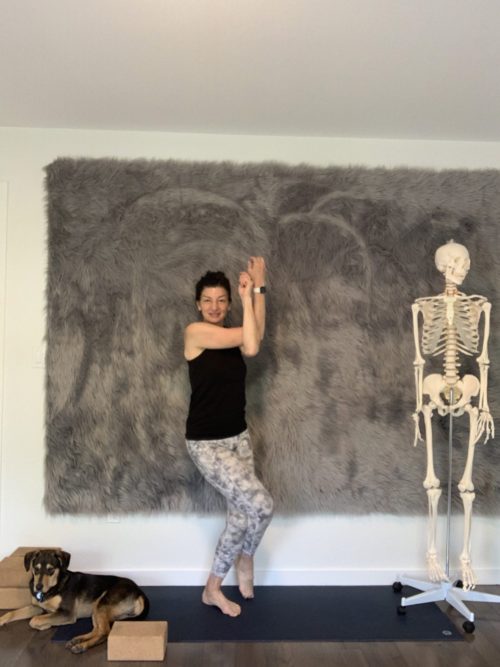
I was recently having a coaching call with one of the teachers in my Blueprint Learning Program. The goal of the program is to help teachers learn the key aspects of anatomy so they can confidently share it in their cues, sequences and conversations they have with students. We were talking about the steps involved in learning anatomy and she mentioned wanting to understand the “nuances” in sharing it with students.
As we were talking through this idea, it got me thinking that it’d make for a great topic to share with teachers. “Nuance” refers to something that isn’t black and white; in the context of learning anatomy, there’s very little nuance to learning the bones, joints and muscles; they are what they are. However, once we start applying that information to many different bodies moving on the mat, the concept of nuance definitely comes up. Just because we’re all built with similar bones, joints and muscles doesn’t mean we all move in the same way. This means we have to look at the body as a system, not just as a collection of parts. But we still have to learn the parts because it’s only through completing that work, that we’ll be able to take a step back and see things from a high level too.
For instance, let’s say you spend time learning all the muscles of the hip. If you frame it in such a way that you’re learning about any muscle that touches the femur and pelvis, that’s encompasses quite a few muscles. You learn each one individually, learning their origin, insertion and primary action. Then you go to teach a class and one of your students tells you they’re having hip pain. They point to a spot on their hip and they say, “It’s right here.” Now, if you aren’t able to appreciate the nuance involved, you might think, “Ok, so what muscle is right there?” and say to the student, “Well, that’s most likely your psoas. That’s the muscle that’s right there.”
The reality is that the body works as a system, like I said before. This means that there could be any number of muscles that’s leading to the person’s pain; anything that’s in that general region is a good candidate. There’s also the impact of any damage to the fascia or tendons or ligaments or even the impact of issues with the bone itself.
A seasoned yoga teacher who is well-versed in anatomy has both an ability to drill down to the details of the body but also take a 10,000 foot view and appreciate the nuance involved in the body as well. This allows us to re-frame our suggestions for students in a way that we’re not saying “Do this and your pain will go away.” We can’t say that because it’s outside our professional frame of conduct. It’s not our role to diagnose or treat pain. Instead, we can appreciate what we know as well as what we don’t, work in concert with the student to better understand what’s going on and offer suggestions for poses to do that might result in the student feeling better. We’ll only know what happens when the student reports back to us what happened when they applied the poses to the body consistently for at least a week or two.
The other thing that appreciating the nuance of anatomy allows us to do is it gives us pause rather than trying to be “right” all the time. It allows us to allow for what we don’t know and also allows us to give students the space to just “be” on the mat. We don’t always have to be cueing them; we can leave space for them to hear their breath. We don’t always have to be sharing anatomy based cues; sometimes we can take them through a flow and let alignment issues come up and just keep them moving, rather than correcting them. Nuance allows us to understand and appreciate that every once in a while isn’t the issue; it’s those repetitive movements that can lead to long term issues.
In what ways to you find nuance comes up for you when you teach? What are some things you’d like to better understand when it comes to anatomy so you can both “zoom in” and “zoom out?”
For a quick and easy way to learn some of the high level concepts in anatomy, take my “Learn Anatomy Challenge,” my free video series and PDF guide that will walk you through the key lessons. You can find it here.
